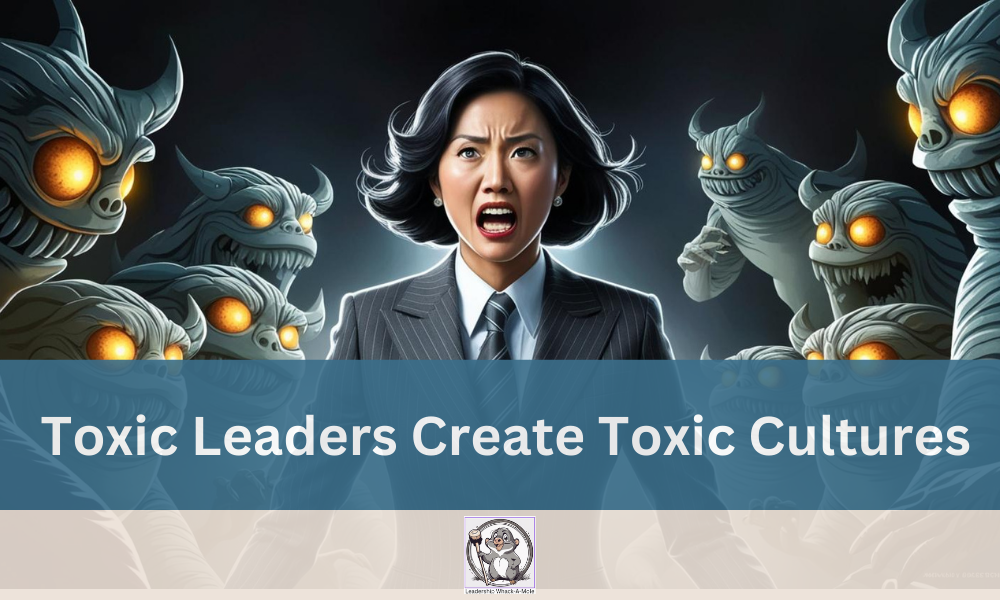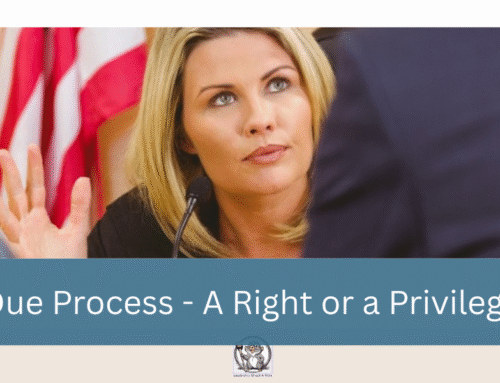
By Ric Shriver
Toxic cultures are created and sustained by toxic leaders. The unfortunate reality we face in today’s business environment is that toxic cultures are often celebrated and held in high esteem. For leaders with a conscience, the presence of toxic cultures in many industries reflects the psychological and emotional warfare that has infected increasingly more homes, communities, and organizations.
So, what is a “toxic” personality? In Leadership Whack-A-Mole: Actionable Strategies for Leadership Challenges, we cite the following characteristics of a toxic leader:
- Take great pleasure in pointing out the mistakes and faults of others, particularly if the others have achieved success or have received positive recognition from senior-level leaders.
- Rarely take responsibility for negative outcomes or mistakes and will only offer apologies if forced to do so by higher levels of authority.
- Are generally withdrawn, preferring to exercise subtle sabotage behind the scenes while coming across as respectful, policy-abiding corporate citizens.
- Are often “syrupy sweet” around authority, portraying an air of piety and self-righteous dignity while seizing every opportunity to denigrate the reputations or character of those they perceive to be threats.
- Will often purposely withhold information to sabotage those whom they inwardly despise.
- Generally, resist positive change, recognizing that the proposed changes could undermine their current level of control and emotional security.
- Will rarely take a stand or form an opinion that contradicts formal authority, always desiring to appear supportive of the direction senior leaders reinforced.
- Will often take credit for or embellish their roles in organizational successes, even if they have little or nothing to do with the successes.
Toxic people are dangerous to us as individual leaders and to the organizations they profess to support. Toxic people often have very low levels of self-esteem. Most of us could fall prey to some of the behaviors of low self-esteem. If left unchecked, low levels of self-esteem can lead to toxicity in our own behavior. Like so many other behavioral issues we may have fallen prey to, either by others whom we work with or through our own misguided actions, toxic behaviors exist on a continuum. On one end of the continuum, toxic behaviors may be barely noticeable; however, on the other end of the continuum, toxicity can be painfully visible.
When leaders possess and demonstrate many of the behaviors outlined in the preceding description of a toxic personality, what will typically happen within the organization are the following toxic outcomes:
- Ideological and flowery mission statements, vision statements, and values that are rarely supported and demonstrated by the decisions and day-to-day behaviors of the leaders, i.e., lots of “lip service” and a lack of authentic, transparent communication.
- Misaligned and maligned goals, goals which often conflict with one another and do not further the published mission and purpose of the organization.
- Blind, self-righteous perceptions of customers’ and clients’ needs – a focus on what the leaders deem what is best for the customer, often reinforced with statements like “we know what is best for them!”
- Dysfunctional internal and external functions and processes that typically create dissatisfaction, conflict, and poor value for the constituents of the organization.
- A growing trend towards recruiting, selecting, and promoting more toxic people. This often happens while conscientious staff and leaders are ostracized, and in many cases, outright terminated from the organization.
- Illogical and dysfunctional organizational structures that support the proliferation of ridiculous job titles and poorly defined accountabilities.
- Instability regarding the financial health of the organization is often covered up by unethical, and in many cases, illegal maneuvering and manipulation of financial practices and transactions.
- Improper, unethical, and often illegal practices and behavior among members of the leadership team which are allowed to occur unaddressed.
- An overemphasis on colorful and extravagant internal and external advertising, often created to compensate for the ugly truths that exist out of the view of the public, ugly truths that inhibit the value and effectiveness of the organization.
A healthy, well-aligned organization will create an environment where a leader’s confidence and attitude are reinforced and supported, providing comfort, confidence, and peace. This was observed in a leadership team gathering by a career-long colleague and friend of mine, Suzanne Hoonan:
“I was a recent guest invited to participate with a group of corporate decision-makers. It was a fascinating experience and one I have thought about at length. I wondered why I left that lengthy meeting feeling so hopeful and confident.
The group was comprised of influential leaders who exhibited behaviors that resulted in those feelings. How did they do that?
We know that a collaborative culture is based on openness, just like a lifesaving parachute. That requires transparency and trust. Energies must be used to search for solutions to challenges and leverage opportunities. No blame, no searching for guilt. Look internally as well as externally.
Leadership sets the tone – always has, always will. Passion, commitment, respect, and follow-through must be employed. Our workforce will know if these qualities are present or not. I could tell that these leaders communicated often and with purpose. They were methodical in their approach to what was communicated and how. In the end, we know that our culture and the way we interact and engage is the single most important thing we can build and maintain. Focus on it every day!” (Hoonan & Associates, 2023, used with permission)
I encourage the leader reading this chapter now to look carefully at the culture he/she is attempting to lead in. I hope that for most leaders, the conditions and characteristics described by Suzanne Hoonan are prevalent in your businesses. However, if the conscientious leader is witnessing or experiencing the symptoms of a toxic culture, I encourage her/him to begin looking for a healthier culture to thrive in. Again, no leader or culture is perfect, but on a continuum in a healthy culture, representation of the toxic behaviors and characteristics described in this article are diminished.




